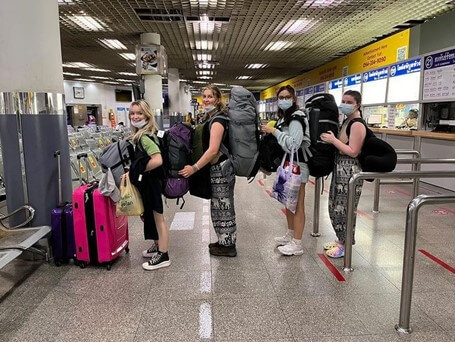Your basket is currently empty!

Clothing & Equipment
Here are some travel packing tips to help you prepare for your journey:
- Pack Lightly: As mentioned, it’s crucial to pack as lightly as possible. Consider the following tips:
- Carry-On Bag: Ensure that everything fits into a maximum of one checked bag (a large rucksack weighing a maximum of 23kg ) and one carry-on cabin bag.
- Airline Requirements: Be aware of airline requirements, and remember that you’ll be responsible for any excess baggage fees.
- Self-Carry: You should be able to carry all your luggage by yourself.
- Climate-Appropriate Clothing:
- Choose clothing appropriate for the climate. Opt for lightweight and breathable materials like loose cotton.
- Ensure your attire covers shoulders, stomach, and knees, respecting cultural norms.
- If you’re volunteering in China or Japan during winter, be prepared for near-freezing or below-freezing temperatures. You may need an additional bag.
- Local Clothing Purchase:
- Upon arrival, consider buying local clothing. Clothing made locally will often be suitable for both your placement and the climate and help you feel a part of the community.
- Longer clothing can protect against the sun and mosquitoes, reducing the need for excessive sun cream and insect repellent.

Remember, we’ll provide more advice and answer any questions during your Training Course. Safe travels! ?✈️
- 60 Packing Tips For Travel From Expert Packers | Pack Hacker
- The 101 Best Packing Tips to Read Before You Travel 2020 | What to Pack
Essential Items
| Essential Items | Remarks |
|---|---|
| Large rucksack (one) | 65 – 75 litres should be big enough. This will be checked-in when you get to the airport and you will collect it at your final destination. Make sure that it complies with the maximum weight specified by the airline you are travelling with (usually 23kg). |
| Small bag or rucksack (one) | As a carry-on bag for your flight, for daily use at your placement and for day trips. Make sure that it complies with the maximum weight and size specified by the airline you are travelling with (usually 8kg and maximum dimensions of 55 x 40 x 23cm). You may also be allowed a small accessory piece (eg handbag, laptop case, etc). |
| Communications equipment | Phone, protective case and phone charger. You must also take a portable power bank (min 10,000Mah) so you can keep your phone charged in an emergency when you may not be able to plug in. More info on local SIM cards and buying data will be given on your Training Course.Please note some airlines and customs departments have specific standards and restrictions for portable power banks and spare batteries. Research any restrictions for the country you are going to. |
| Passport | Your passport must be valid until 6 months after your return date to the UK. While countries only require 6 months passport validity of the date of entry, your passport obviously need to be valid for the entire duration of your stay. Furthermore, Volunteers who have left their placement country for planned (holidays) or unplanned (family emergency) reasons have had difficulties with visa/permit extensions if there is not enough time left of their passport. Ensuring that your passport expiry date is not before this will avoid these problems. |
| Credit/debit cards | Travel cards and/or debit/credit cards so you can access money in local currency while abroad. Visa and MasterCard work well and can be used to withdraw money from ATMs in major towns. Payments can be made directly by card in larger hotels and shops, but you should not rely on this. Most expenditure will be in cash, especially in the smaller towns and villages where our placements are based. |
| Cash | A small amount of cash in US dollars may be useful as a short-term backup in case you lose you cards or ATMs are not working. Further advice will be given on your Training Course. |
| Copy of important documents | Make copies of important documents to take with you, leave a copy with family at home and send scans/photos of the documents to your email account. This should include the photo/signature pages of your passport, the visa page in your passport, vaccination record, yellow fever certificate and anything else that you would need to access if the original is lost. |
| Personal drinking bottle with water filter | It is impossible to know whether water is safe to drink without the cost and environmental impact of buying bottled water or boiling then cooling your drinking water. There are some great water bottles available that will help ensure the water you drink will be safe. Options include Aquapure Traveller and Lifestraw Go. Other types are available but whatever you choose should meet the high water purification standards of these models. Make sure it will last you for the whole of your trip by buying spare filters with the bottle if required. Manufacturers state how many litres of water their bottles will purify and you will need to drink around 2-3 litres a day. |
| 1 personal smoke/fire alarm and 1 carbon monoxide alarm (these will be provided at Training) | To keep you safe from smoke and carbon monoxide at all times, during travel, while on holiday and at your placement accommodation. During your Training Course we will provide you with these alarms to take with you. You will be asked to pay a deposit of £35 per unit (£70 total) which will be refunded to you on their safe return to Project Trust. This ensures they are available for future Volunteers. |
| Torch | Preferably a head torch to keep your hands free. Power cuts are common and you need to be able to find your way around safely. Reachargeable torches are preferable but take a set of normal batteries as back up. |
| Plug adaptor(s) | Do some research on which type you will need for the country you are going to. |
| Personal medication | If you are on a prescription you will need to find out whether you can take enough medication for the period you will be away. |
| Mosquito net | Small mosquito net that you can use at your accommodation and while travelling or on holiday. |
| Sun cream | At least factor 30. |
| Insect repellent |
Suggested Items
| Suggested Items | Remarks |
|---|---|
| Packing cubes/bags | These are a good way of organising things in your rucksack and make it easier to find things. |
| Lightweight waterproof jacket | Something cheap and lightweight that packs down small, to keep wind and rain off. Do not take expensive gore-tex or similar as breathable materials do not work well in humid environments. |
| First aid kit | Basic first aid kit for dealing with scratches, bites, headaches, diarrhoea, etc. |
| Toiletries | Basic toiletries are available but bring enough to start. Good brands are expensive with your living allowance. Some sanitary products will be available abroad but may be expensive. More information and alternatives will be discussed on your Training Course. |
| Sewing kit | A small, basic one may be useful. |
| Room decorations | Blu tac, posters and postcards of where you come from are really useful, as are photos of family and home. You can also use these for lessons. |
| Teaching aids | More information about this will be given on your Training Course. |
| Entertainment | Travel games, book/e-reader, jump rope, etc. You may want to consider a laptop/tablet, but be aware that personal items are not covered by the Project Trust insurance policy and you would have to take out an additional policy it you wish to cover these items. |
Suggested Clothing
| Suggested Clothing | Amount | Remarks |
|---|---|---|
| Smart clothing for placement/teaching | 2 | Comfortable but smart clothing for daily wear on your placement (trousers, skirts, blouses, dresses, etc). |
| Casual/adventure clothing | 2 | Shirts, trousers, blouses, skirts, dresses, etc. You may be able to find clothing options that will suit both placement/teaching and casual uses, to save space in your luggage. |
| Sports clothing | 2 | Shorts, t-shirts, etc. Make sure shoulders and stomach are covered and no ‘skimpy’ shorts (should nearly reach your knees). These can also be used for nightwear. |
| Warm tops | 2 | For travelling to/from the country and for cooler times of year it is good to have a couple of warmer tops, eg fleeces or jumpers. Go for lightweight/warm materials which do not take up much space and are easy to dry. |
| Underwear and socks | 5 | |
| Respectable shoes | 1 | For teaching and more formal occasions. You don’t necessarily need to be able to shine and polish these, they just need to be presentable and clean for use on your placement and more formal occasions. |
| Casual/sports shoes | 1 | These might be trainers, walking shoes or walking boots, depending on your plans. Shoes than you can wear out and hike in are a good option. |
| Sandals | 1-2 | Strong sandals with straps (eg Teva) are a good option, to let your feet breathe. Flip-flop type sandals can easily be bought locally. |
| Hat | 1 | Sun hat/baseball cap. |
| Towel | 1 | Lightweight, quick-drying travel towels are a better option that big, heavy bath towels. |
| Swimsuit / swimming trunks | 1 | Make sure that you only wear these in tourist areas and where it is appropriate to do so. |
